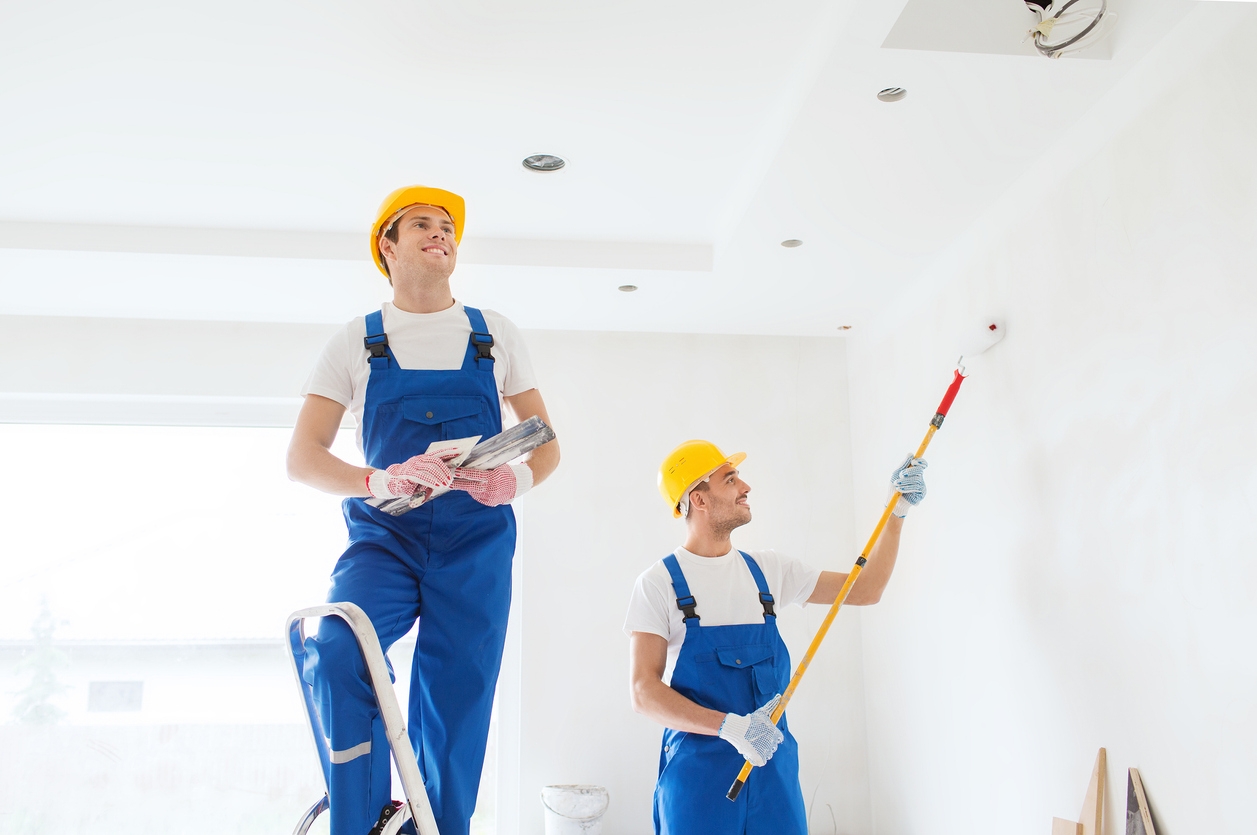If you hired a professional paint crew in the Pleasanton, CA area in the past, you might have been amazed at how they worked quickly without knocking over a gallon of paint or leaving paint drips on baseboards. They can also advise you on additional options such as staining exterior surfaces, repairing stucco and light carpentry work. The professionals’ ability to paint quickly and efficiently is due to their years of practical experience. They have spent a long time plying their skill without leaving major painting issues.
DIY home painters may not have the skills and expertise of professional painters in Tracy, CA. But with enough practice, they may be able to produce near-professional results without leaving troublesome issues like paint spills and drips. Or, if they choose a professional to paint their Sunol, CA home, they can take steps to protect the surfaces from dripping paint.
How Does House Painting Protect Your Home?
Painting can protect a home in several ways:
1. Weather protection
- Water resistance: High-quality exterior paints can create a waterproof barrier, preventing water from seeping into the walls, which can cause damage like rot and mold.
- UV protection: Paint can reflect harmful UV rays, potentially preventing the underlying materials from deteriorating due to sun exposure.
2. Preventing damage
- Insect prevention: Paint can fill small gaps and cracks that insects might use to enter a home. Some paints also contain insect-repellent chemicals.
- Rust prevention: For homes with metal elements, painting can protect against rust and corrosion by preventing moisture from coming into direct contact with the metal.
3. Durability and longevity
- Surface protection: Paint is a protective layer for wood, siding, plaster, and other materials, helping them withstand wear and tear from weather and physical impact.
- Crack and chip resistance: Good quality paint can resist cracking and chipping, maintaining the integrity of the surfaces it covers.
4. Mold and mildew resistance
- Certain paints are formulated with antimicrobial properties to resist mold and mildew growth, which is particularly important in humid areas like bathrooms and basements.
5. Improved air quality
- Low-VOC paints: Modern paints with low volatile organic compounds (VOCs) can improve indoor air quality by reducing the release of harmful chemicals.
6. Aesthetic appeal
- While not a direct form of protection, maintaining a well-painted exterior and interior can increase the home’s curb appeal and value, indirectly contributing to the overall care and maintenance of the property.
7. Heat management
- Energy efficiency: Some reflective paints can help manage heat, keeping the home cooler in summer and warmer in winter, which can reduce energy costs and protect the building materials from temperature extremes.
Regularly maintaining the paint on your Fremont, CA home can help extend the life of your home’s exterior and interior surfaces. It prevents costly repairs and maintains your home’s aesthetic and market value.
House painting certainly protects your home in many ways. However, there are items and surfaces that you want to protect from accidental paint spills or drips. Doing so involves careful preparation and attention to detail. Here are the steps you can follow for both interior and exterior painting:
Interior painting
1. Clear the area:
- Remove as much furniture from the room as possible.
- Take down wall hangings, picture frames, and decorations.
- Remove the light switch and outlet covers.
2. Cover furniture and floors:
- Use plastic sheeting or drop cloths to cover any remaining furniture.
- Place drop cloths or rosin paper on the floors to protect them from paint drips and spills.
3. Tape off areas:
- Use painter’s tape to mask off trim, baseboards, window frames, and other areas you don’t want to be painted.
- Press down the tape firmly to prevent paint from seeping underneath.
4. Seal doorways and vents:
- Close doors to rooms you’re not painting and seal gaps with plastic sheeting and tape to prevent paint fumes from spreading.
- Cover air vents with plastic to prevent paint particles from entering your HVAC system.
5. Remove or protect hardware:
- Take off door handles, knobs, and hinges if possible.
- Cover any remaining hardware with painter’s tape or plastic wrap.
6. Protect fixtures:
- Cover light fixtures, ceiling fans, and other permanent fixtures with plastic bags or sheeting secured with tape.
Exterior painting
1. Protect landscaping:
- Trim bushes and trees away from the house to provide easy access to walls.
- Cover plants, shrubs, and flower beds with drop cloths or plastic sheeting.
2. Cover windows and doors:
- Use painter’s tape and plastic sheeting to cover windows and doors to prevent paint splatters.
- Ensure all edges are sealed to prevent paint from seeping in.
3. Move outdoor furniture:
- Relocate outdoor furniture, grills, and other items away from the area to be painted.
- Cover any items that cannot be moved with drop cloths or plastic sheeting.
4. Protect walkways and driveways:
- Lay down drop cloths or plastic sheeting on walkways, driveways, and patios to catch paint drips and spills.
5. Mask off fixtures:
- Cover outdoor light fixtures, electrical outlets, and other hardware with plastic bags or painter’s tape.
6. Shield roof and gutters:
- Use painter’s tape and plastic sheeting to protect gutters, downspouts, and roof edges from paint splatters.
General tips
- Use quality materials: High-quality painter’s tape, drop cloths, and plastic sheeting can make a significant difference in protecting your home.
- Work in sections: Focus on one area at a time to ensure thorough protection and minimize the risk of mistakes.
- Clean up spills immediately: Keep a damp cloth or sponge nearby to clean up any paint spills or drips right away.
Following these steps can help you effectively protect your home’s interior and exterior from paint during your project.
Conclusion
Taking the time to properly protect surfaces before painting is crucial, whether you choose to DIY or hire a professional. This preparation ensures a clean, high-quality finish and prevents damage to your home.
But if you seek expert results with minimal hassle, contact Custom Painting, Inc. Our crew has the skills and experience to deliver impeccable results, from preparing the surfaces to painting to doing final cleanup and inspection. For a free estimate, call us at 925-294-8062 or message us on our contact page.



